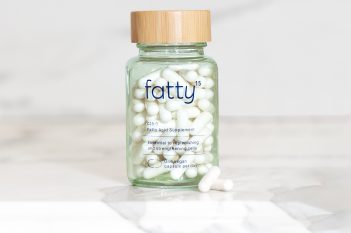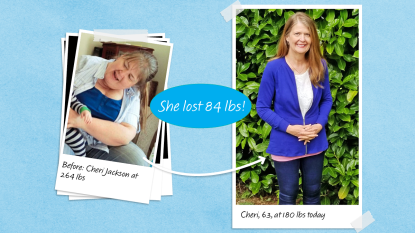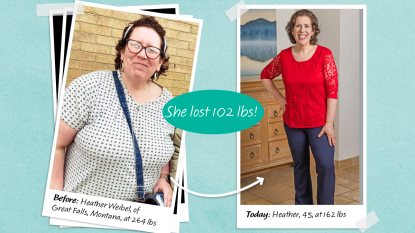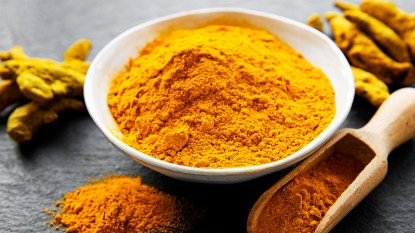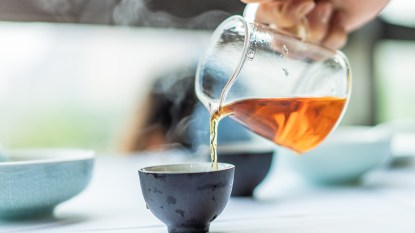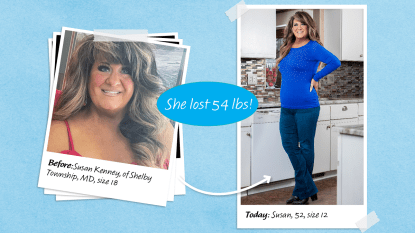Lose 16 Pounds in 3 Weeks and Save $200 a Month With an Instant Pot
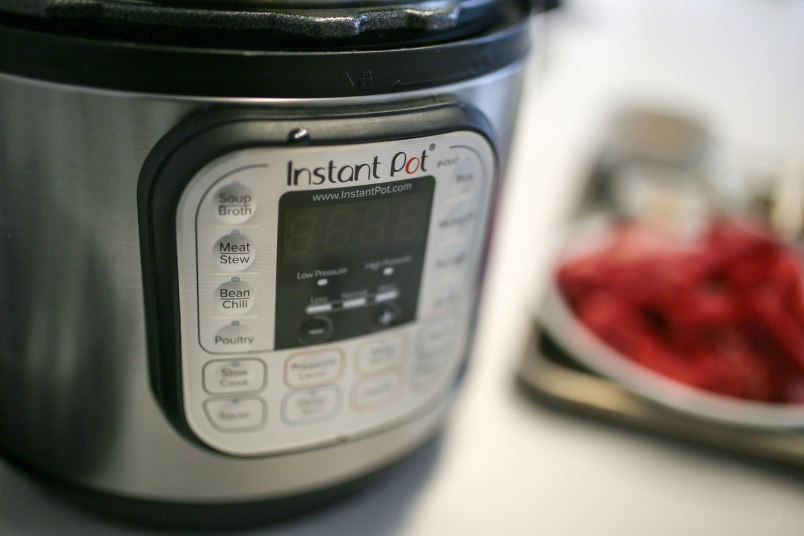
Pressure cookers have come a long way from the complicated contraptions clanging and hissing on our mothers’ stovetops. New one-touch, lock-and-seal models such as the Instant Pot ($79.99, Amazon) are making it easier than ever to simplify dinner prep, slash cook times, and deepen the flavor of meals. Even better, the kitchen gadget has proven to be a surprisingly effective slimming tool and has helped thousands of women from coast to coast lose 20, 30, 50, and even 100 pounds — deliciously.
“Pressure cooking locks in nutrients and removes troublesome hormone disruptors,” explains Steven R. Gundry, MD, a Yale-educated heart surgeon and author of The Plant Paradox: The Hidden Dangers in “Healthy” Foods That Cause Disease and Weight Gain ($17.99, Amazon). “For a busy family, a pressure cooker is ideal — it gets healthy meals to the table quickly.”
Here are five ways that pressure cooking can help fast-track your slim down.
1. It eliminates hormone disruptors.
Healthy carbs such as beans, grains, and corn contain high levels of compounds called lectins that can cause the body to pack on fat, cautions Dr. Gundry. He explains that lectins mimic the blood sugar–regulating hormone insulin, which prevents blood sugar from entering cells to be burned for fuel. Instead, the sugar is stored as fat.
The good news: “A pressure cooker will destroy almost all lectins,” asserts Gundry. That’s key, since limiting intake of lectins helps restore insulin response, prompting the body to release stubborn stored fat. The proof: In a study in the journal Nutrition & Metabolism, subjects on a lectin-free diet weighed 22 percent less and had 43 percent less jiggly subcutaneous fat than those on a standard diet. And women who follow Gundry’s low-lectin food formula report losing up to four pounds in three days.
2. It retains mores slimming nutrients.
Research shows that up to 70 percent of water-soluble nutrients in vegetables — including stress-soothing vitamin C and energizing B vitamins — are lost in steam or boiling water, which is routinely discarded during conventional cooking methods. But an electric pressure cooker has an airtight seal that minimizes evaporation.
“This helps retain more nutrients compared with other forms of cooking,” says certified wellness coach David Nico, PhD, author of Diet Diagnosis ($17.38, Amazon). In fact, researchers at Haryana Agricultural University in India report that pressure cooking preserves 95 percent of water soluble nutrients. Cooking under pressure also quickly breaks down bone and cartilage, which helps to extract nutrients and releases them into stock and sauces. That means dishes made in the pressure cooker tend to be richer in wrinkle-reducing collagen and metabolism-revving amino acids.
3. It boosts flavor.
“Pressure cookers create a pressurized environment that draws liquid back into food, keeping it tender,” says registered dietitian Maya Feller, a contributor on Good Morning America. “Leaner cuts of meat do well in pressure cookers because the juices are retained.”
The intense heat and steam within a pressure cooker also concentrates flavors to make just about any dish taste better — without extra calories from butter, cream, or other fats. “Pressure cooking makes dishes taste like I cooked for four hours when it only took 45 minutes,” affirms Kelly Calton, 46, who credits the cooking technique with helping her lose 87 pounds and getting rid of her acid reflux. That’s a plus because richly flavored foods spark the brain’s satiety center, which makes you feel fuller, faster. In a Chinese study, this effect helped subjects reduce their calorie intake by 31 percent.
4. It makes healthy eating quick and easy.
With the help of a pressure cooker, it’s easy to prepare big batches of healthy staples such as soups, shredded chicken, whole grains, and beans — so you can prep an entire week’s worth of meals in just a couple hours on Sunday. “Having a tasty, nutritious dish at home increases the likelihood that you will make a healthy choice,” says Feller, who recommends portioning out meals in individual containers for easy-to-grab lunches and dinners. “Plus, you’ll reduce time spent in the kitchen and spend less money on food.”
5. It can transform your health.
Brittany Williams sat in the hospital, grappling with the news: Her four-year-old daughter had been diagnosed with rheumatoid arthritis, a chronic inflammatory condition. “I knew my diet was hurting me,” thought the mom of three. “But I didn’t want it to hurt my kids.” Brittany knew if she was going to escape junk food, she’d need to find an easy way to prepare healthy meals. She shares, “My life was so fast-paced, I had no time to slave over the stove.” Thinking a kitchen gadget could help, Brittany’s husband bought an Instant Pot. “I converted all my Crock-Pot meals to pressure-cooker recipes, and they were ready in minutes.”
Inspired, Brittany challenged herself to prepare dinner every night for a year. “I could throw a few things in the pot and have dinner on the table in half an hour.” The tasty tactic was a success with Brittany’s schedule, scale, and budget: She shed 16 pounds in three weeks and cut her family’s grocery bill by $200 a month! After 10 weeks, Brittany was able to get off the hypothyroid medication she thought she’d need for life. “The doctor called it a miracle, but I knew it was because of my diet.” Now 125 pounds slimmer, the InstantLoss.com blogger reveals, “I haven’t been this thin since sixth grade!” Brittany glows knowing her daughter is thriving too. “My husband told me, ‘Our daughter is well because of you.’”
We write about products we think our readers will like. If you buy them, we get a small share of the revenue from the supplier.
More From FIRST
How the Hormone Reset Diet Heals Your Metabolism for Optimal Weight Loss
Lose 10 Pounds in a Week by Turning Your Metabolism Into a Fat-Burning Machine
The Military Diet (aka the Ice Cream Diet) Is Super Strict — But Does It Work?


